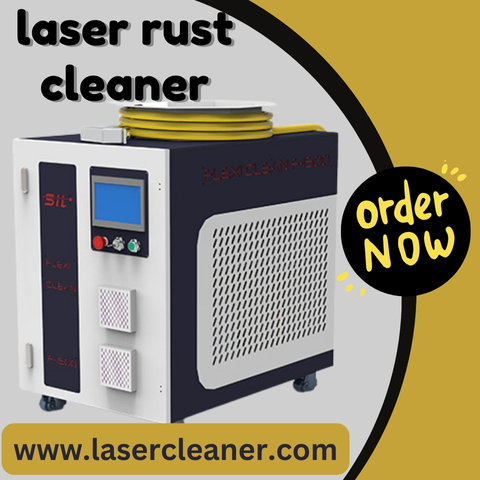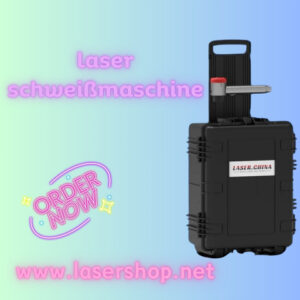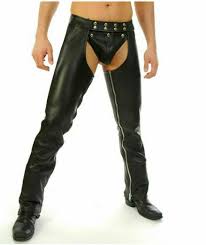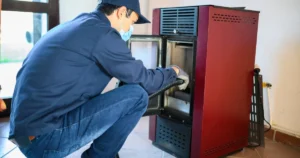
Rust is one of the most persistent problems in industries where metal plays a central role. From automotive manufacturing to shipbuilding and even precision engineering, rust can degrade performance, reduce safety, and increase maintenance costs. The arrival of the laser rust cleaner has introduced a transformative way to deal with corrosion. Unlike traditional methods, which often involve abrasive action or harsh chemicals, this technology uses high-energy laser beams to target and remove rust while preserving the metal beneath.
But does it truly deliver restoration without compromising the surface or altering the material’s structural integrity? Let’s dive deeper into the science, application process, and real-world relevance of this innovative tool.
Understanding the Laser Rust Cleaner Process
A laser rust cleaner works by directing a concentrated laser beam onto the surface of a rusted metal. The light energy interacts with the oxidized layer, heating it so rapidly that it vaporizes or turns into plasma. This action selectively targets rust because rust and clean metal absorb light differently. The wavelength is chosen to be optimal for rust absorption, meaning the beam passes harmlessly over intact metal without significant heating.
This selectivity is the key reason why the metal beneath remains intact. The laser essentially “recognizes” the oxidation layer and removes it without grinding into or chemically altering the base material.
The Precision Factor
The most impressive aspect of a laser rust cleaner is its level of precision. Unlike sandblasting, which removes both rust and some of the underlying material, the laser can be tuned to operate with micron-level accuracy. This makes it possible to treat delicate components, including thin metal sheets or intricately shaped surfaces, without risk of warping or pitting.
For industries where dimensional accuracy matters — such as aerospace parts or injection mold surfaces — this level of control is invaluable. It also makes the process suitable for restoration work on historical artifacts, where preserving original material is essential.
No Secondary Waste Contamination
When traditional rust removal methods are used, they often create secondary waste, such as abrasive particles or chemical residues, which then require further cleaning and disposal. A laser rust cleaner produces minimal waste, mostly in the form of microscopic dust particles that can be vacuumed away during the process.
Because the system is dry and contactless, there’s no risk of contaminating the surrounding environment with chemical runoff or embedding abrasive particles into the surface.
Material Integrity Preservation
A major concern with any rust removal process is whether it will weaken the metal. Excessive heat, deep abrasions, or chemical corrosion can change the crystalline structure of metal, affecting its tensile strength and fatigue resistance.
The laser rust cleaner addresses this by keeping the heat input localized and brief. The beam moves quickly across the surface, removing rust before the heat can spread into the base metal. In practice, this means the core structure remains unchanged, and the original mechanical properties of the part are preserved.
This is particularly important for components like gears, axles, and pressure vessel surfaces, where even minor alterations could lead to premature failure.
Suitability Across Industries
The versatility of the laser rust cleaner makes it applicable across a wide range of sectors:
-
Automotive Manufacturing and Repair – Removing rust from chassis, panels, and engine components without altering the fit or finish.
-
Marine Industry – Treating ship hulls, propellers, and anchors, even while in dock, with no risk of contaminating water.
-
Aerospace – Preparing surfaces for bonding or painting while retaining precise tolerances.
-
Construction and Heavy Equipment – Extending the life of steel frameworks, cranes, and industrial tools.
-
Art Restoration – Cleaning sculptures, gates, and architectural metalwork without damaging historical surfaces.
Surface Preparation for Coatings
One overlooked advantage of the laser rust cleaner is its ability to prepare a surface for further coating or treatment. Because it removes not only rust but also oil, grease, and other contaminants, the cleaned metal is perfectly primed for paint, powder coating, or welding.
This step eliminates the need for separate degreasing or abrasive preparation, reducing both process time and costs. Additionally, the surface is free of micro-scratches, which can help coatings adhere more uniformly and last longer.
Operation and Maintenance Simplicity
While the internal technology is complex, using a laser rust cleaner can be straightforward once set up. Operators control the machine via a user interface, adjusting parameters like beam intensity, frequency, and scanning speed based on the rust’s thickness and the metal type.
Modern units are often portable, allowing technicians to bring the cleaning tool directly to the workpiece. This mobility is valuable in field applications where transporting large or fixed components to a workshop would be impractical.
Environmental Impact Reduction
As industries push toward sustainability, reducing harmful cleaning methods becomes a priority. Laser rust cleaning requires no consumables like abrasive grit or chemical solvents. The minimal waste produced is dry and easy to capture, and the process consumes less water and fewer chemicals, aligning with environmental standards.
This also makes it a future-proof solution as environmental regulations continue to tighten globally.
Cost-Efficiency Over Time
Although the initial investment in a laser rust cleaner can be higher than buying sandblasting or chemical cleaning equipment, its long-term operational savings are significant. The lack of consumables, reduced labor time, and lower maintenance costs often offset the purchase price over time.
For businesses performing frequent rust removal, these savings can be substantial, especially when factoring in the avoidance of damage or rework costs from more aggressive methods.
Safety Considerations
When used correctly, a laser rust cleaner poses minimal risk to the operator. Modern units are designed with safety interlocks, shielding, and dust extraction systems. Operators typically wear protective eyewear to guard against the intense laser light.
Unlike chemical cleaning, there’s no inhalation of toxic fumes, and unlike abrasive blasting, there’s no risk from flying particles or high-pressure streams. This makes it safer for both the operator and surrounding work areas.
The Science Behind “No Damage” Claims
The claim that a laser rust cleaner doesn’t damage metal is grounded in physics. Different materials absorb light differently based on their composition and surface state. Rust, being an iron oxide, absorbs the laser’s wavelength more efficiently than bare metal.
This difference in absorption is exploited so that the laser energy is almost entirely absorbed by the rust layer, heating and removing it while reflecting harmlessly off the clean metal beneath. By carefully controlling beam parameters, engineers ensure that the process is both efficient and gentle.
The Growing Role in Modern Industry
As manufacturing becomes more precise and regulatory requirements for environmental impact increase, the laser rust cleaner is becoming a standard tool in many industrial settings. Its ability to combine speed, precision, safety, and sustainability positions it as more than just a rust removal solution — it’s a forward-looking approach to surface treatment.
The shift toward adopting this technology is already visible in high-value industries, and as the equipment becomes more affordable, its use is expected to expand even further into mid-sized and smaller operations.
Final Thoughts
The question of whether a laser rust cleaner can restore metal without damage is no longer theoretical — in practice, it achieves this daily across industries worldwide. By leveraging the selective absorption properties of rust versus clean metal, the process removes corrosion without altering the substrate’s structural or visual integrity.
Its precision ensures that intricate or thin components are treated safely, while the absence of harsh chemicals or abrasive contact protects both the operator and the environment. Over time, businesses see not only cleaner parts but also reduced costs, fewer failures, and improved sustainability metrics.
Far from being a niche tool, the laser rust cleaner represents the next step in how industries maintain and restore their equipment. For companies seeking a reliable, efficient, and future-proof method to combat corrosion, it’s not just an alternative — it’s the modern standard.





